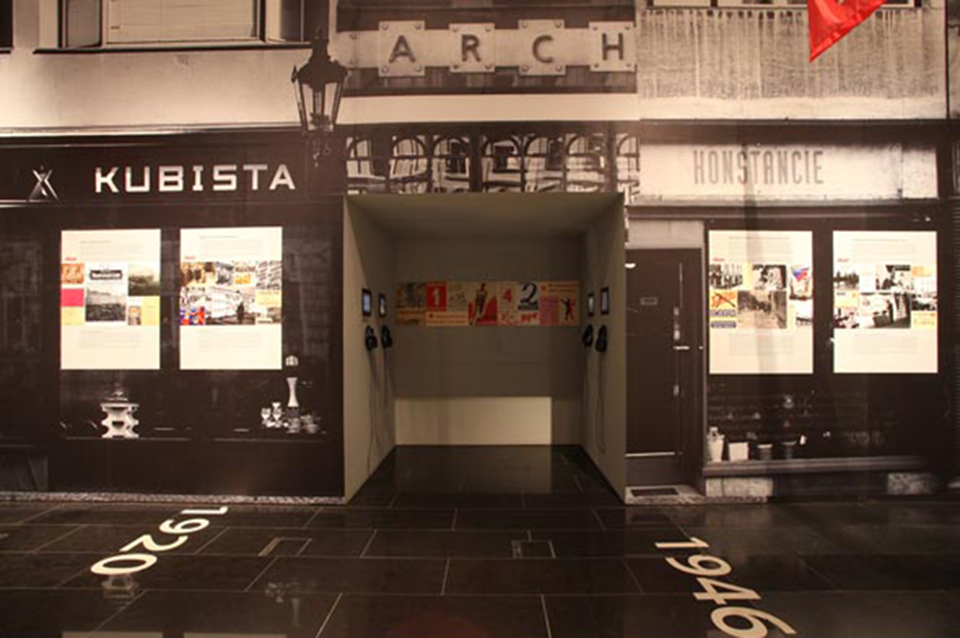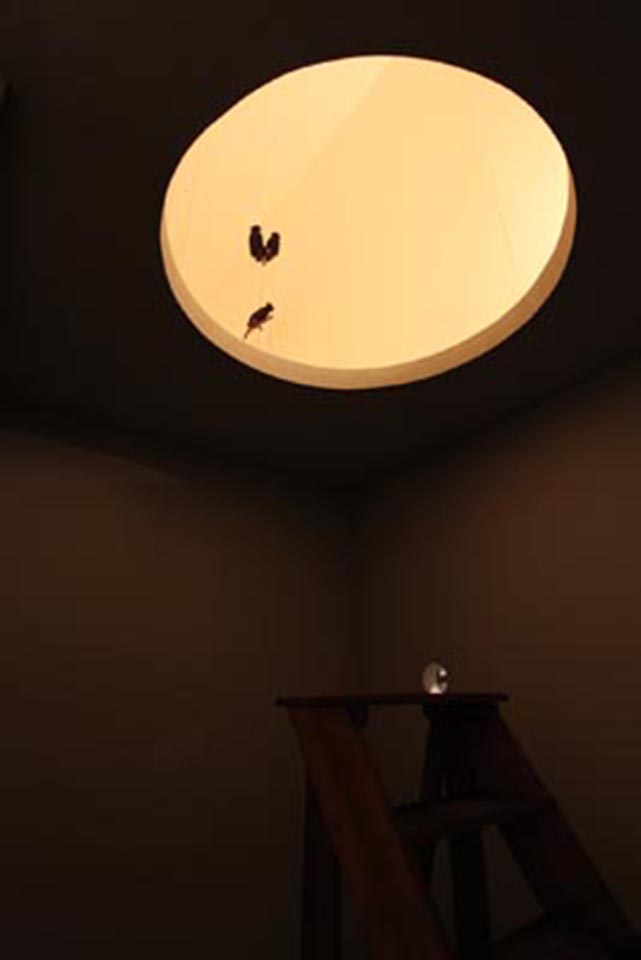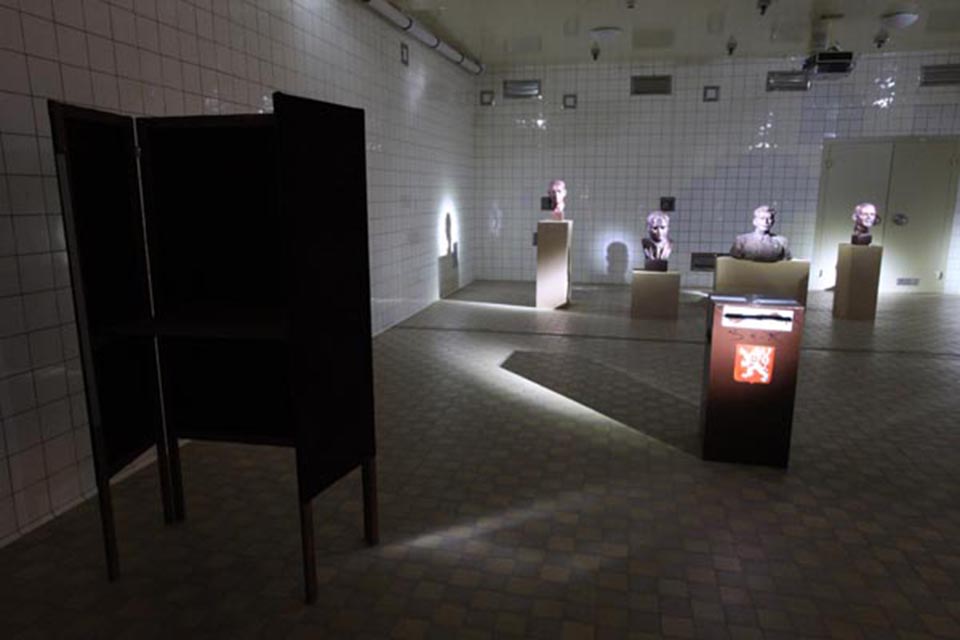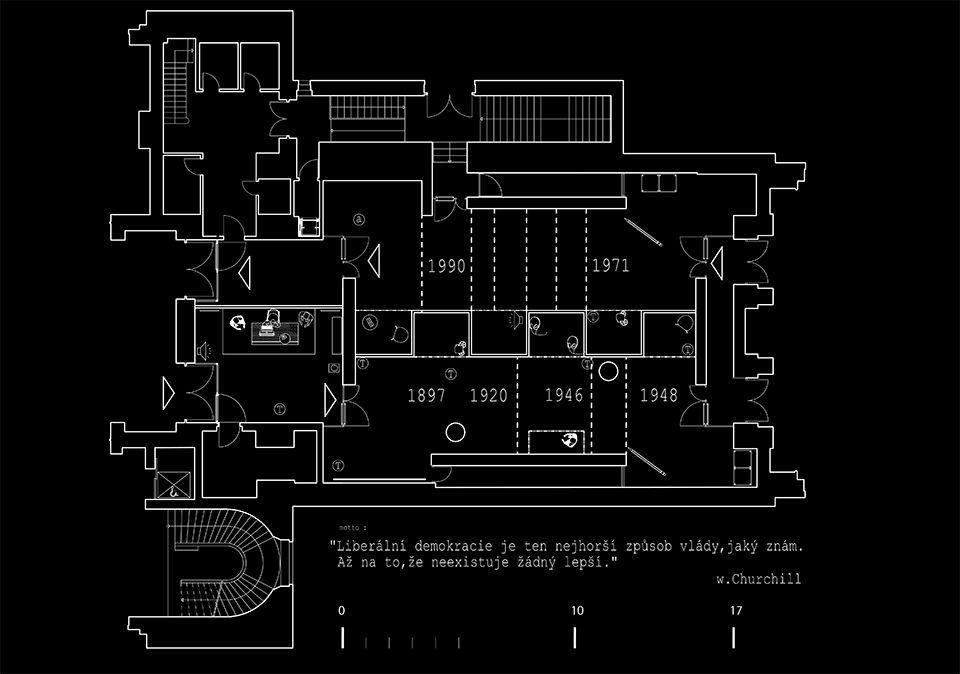
Exhibition
The main idea behind the spatial arrangement of the exhibition is the motif of an election contest in the streets of the city. We propose to divide the exhibition hall lengthwise by a wall into two halves. This will create a narrow and long space, which will create the impression of a street with the help of full-width painting of real house facades. The houses selected for the painting will correspond in their architecture to the time period in which the visitor is currently located. The election atmosphere is created by election slogans and promises on cloth banners that are hung between the houses. The election slogans again correspond to the different time periods. The atmosphere is underlined by the sound of radio broadcasts.
The division of the hall by a transverse wall allows the visitor to be guided along a timeline from 1897 to the 1950s, where the main hall is joined by the 1954 polling station in the underground area.
The niches articulating the wall house interactive elements, audio-visual equipment, headphones, a computer game, etc.
Another interactive element is the placement of two “balconies”. One will be placed in the central part of the exhibition and will demonstrate the power of the political power of the time by its inaccessibility. On the top, a mannequin of K. Gottwald will be placed. Here we propose to place an audio loop of his speech. The handset will be placed under the balcony. The second balcony will be placed at the very end of the exhibition, where in the time of democracy it is possible to stand on the balcony and “speak to the crowd” together with the leaders of the time.
The exhibition ends with a contemporary element of the electoral struggle, a billboard, with an indicative slogan of the time. The billboard also forms the back wall of the election office at the beginning of the room.
In the basement of the 1954 polling place, we propose an interactive video that triggers as the visitor appeals. This audio-visual is intended to draw attention to the consequences of voting decisions and the flatness of campaign promises.
Realization
Stages: study, implementation project, implementation preparation, implementation
year: 2011
author:Jana Vencálková,Martin Kocich







